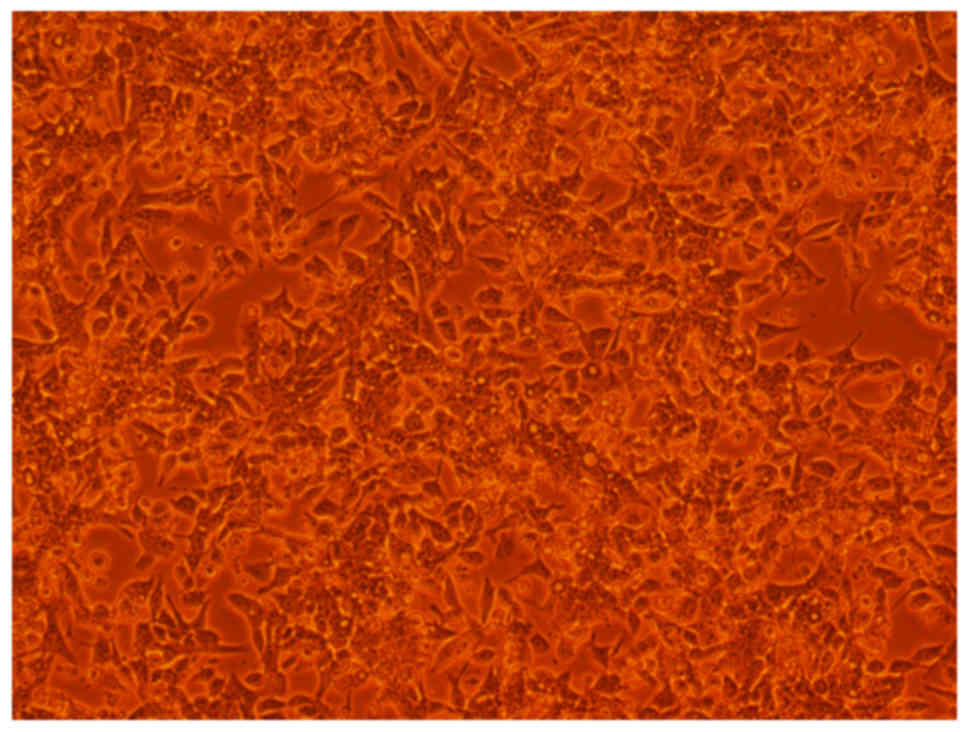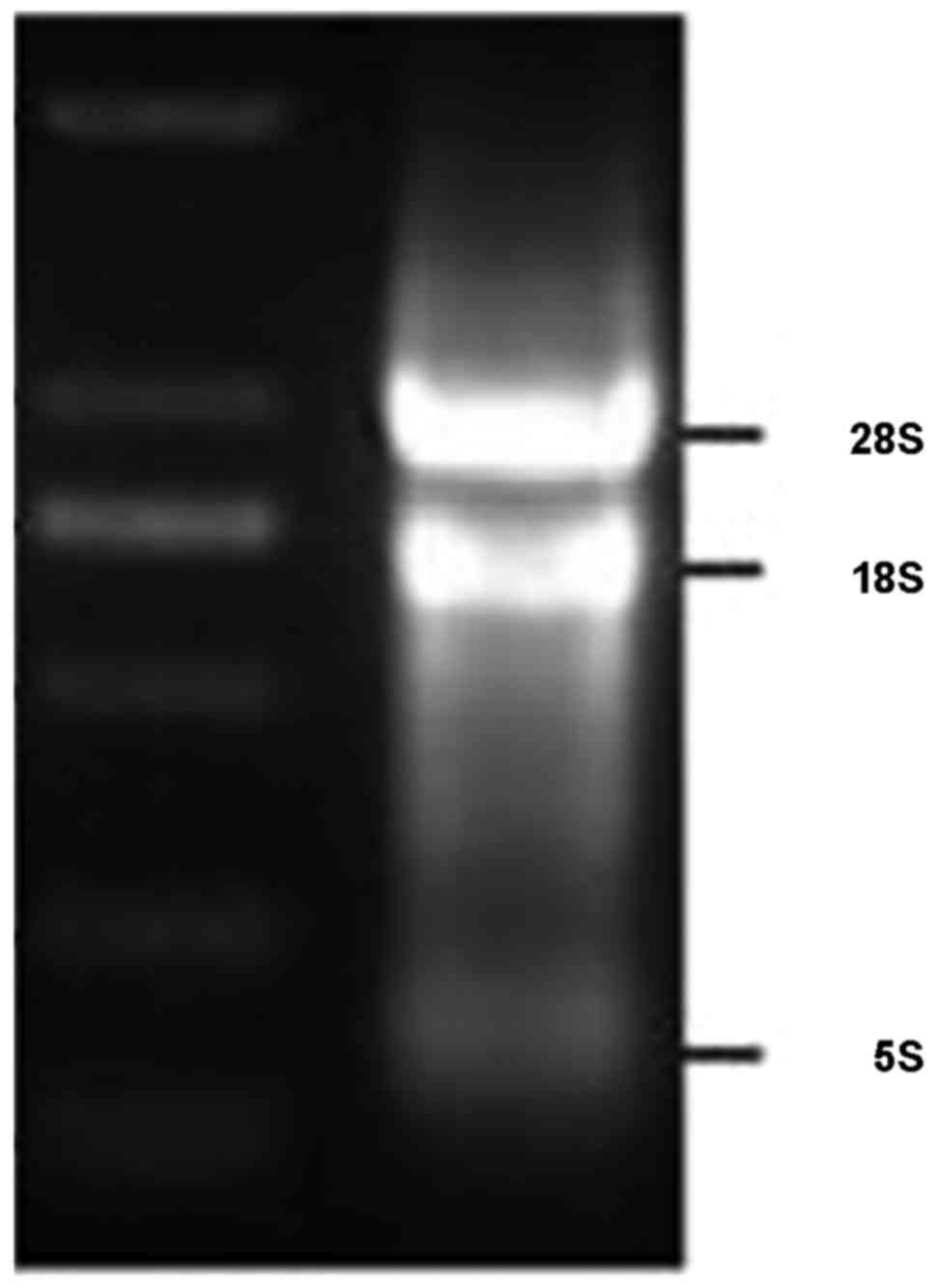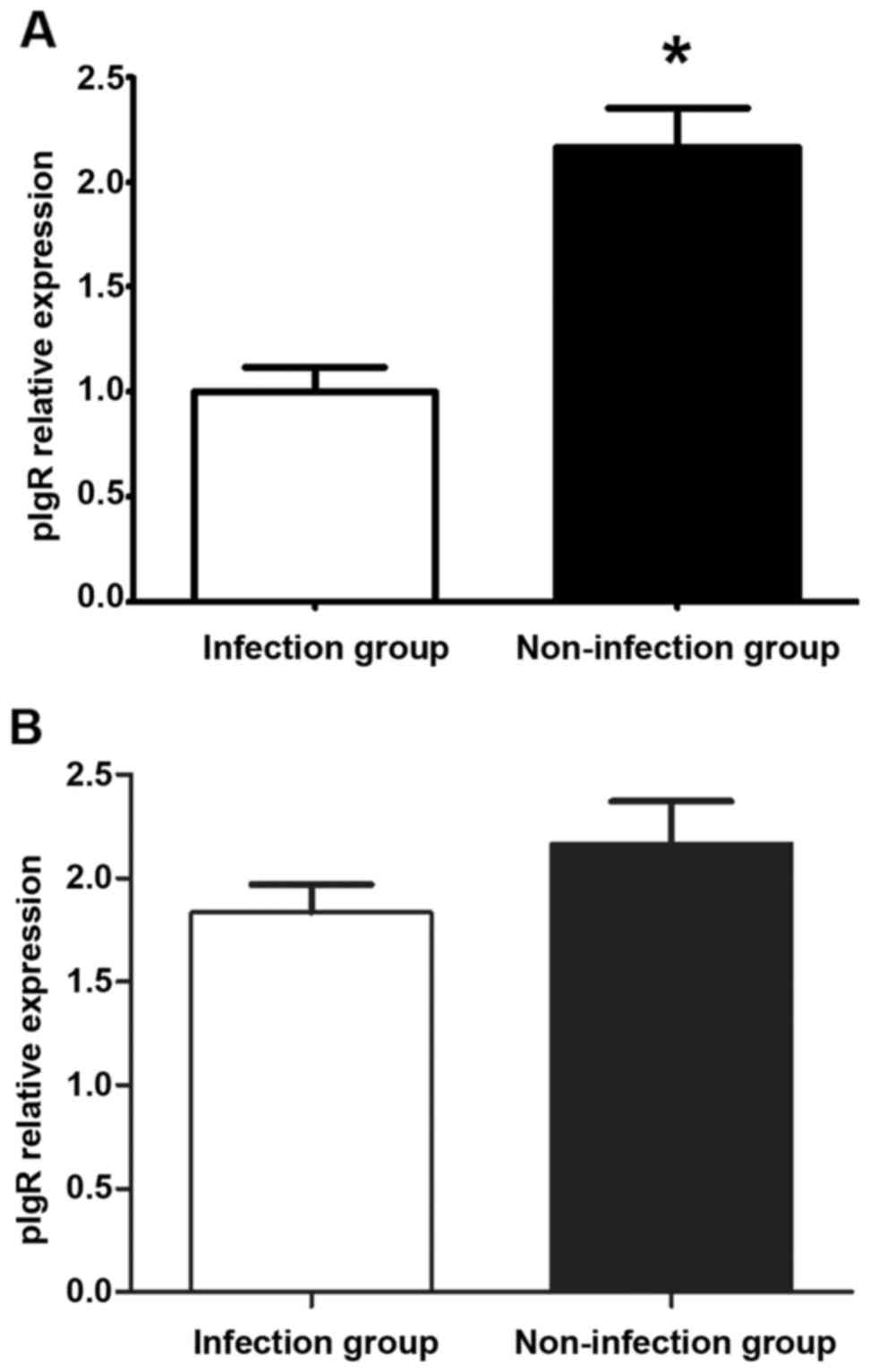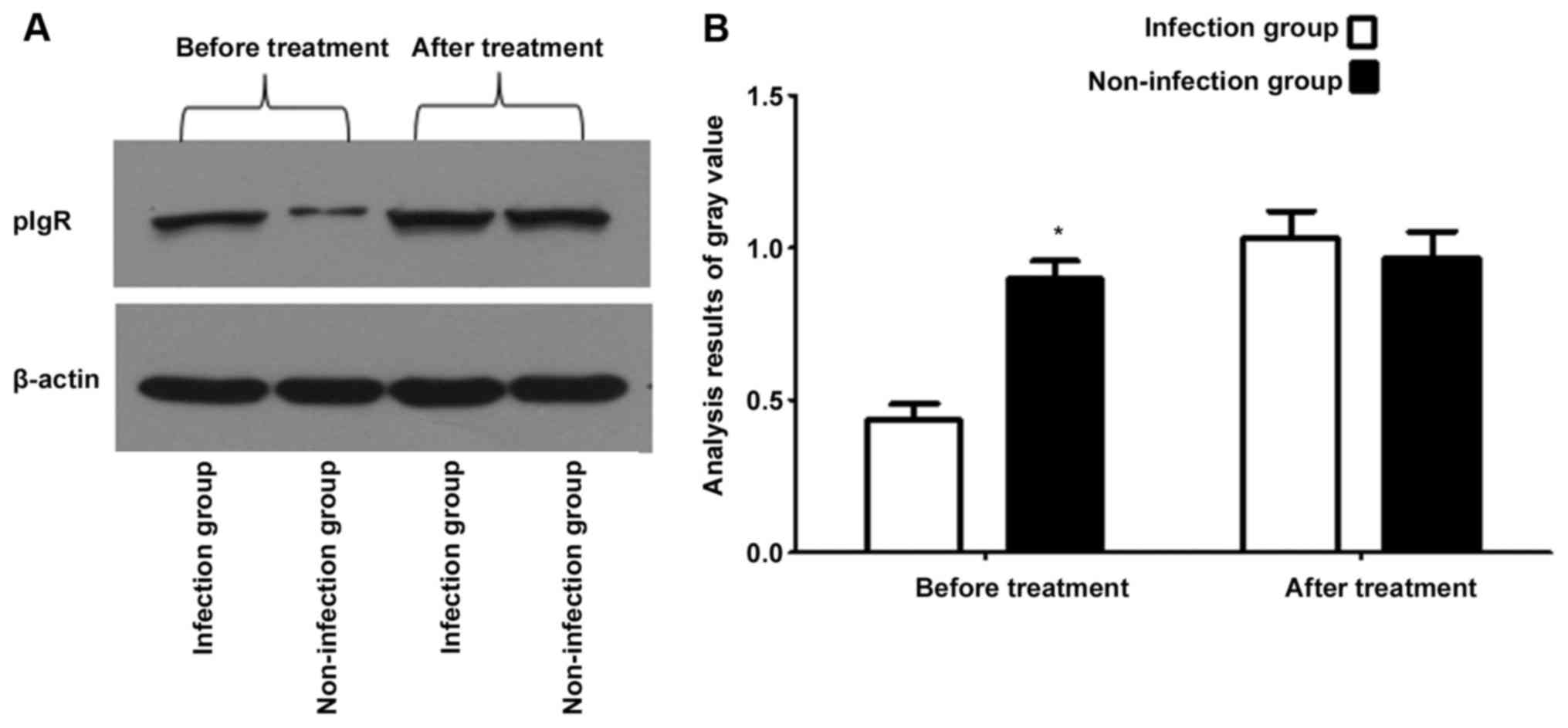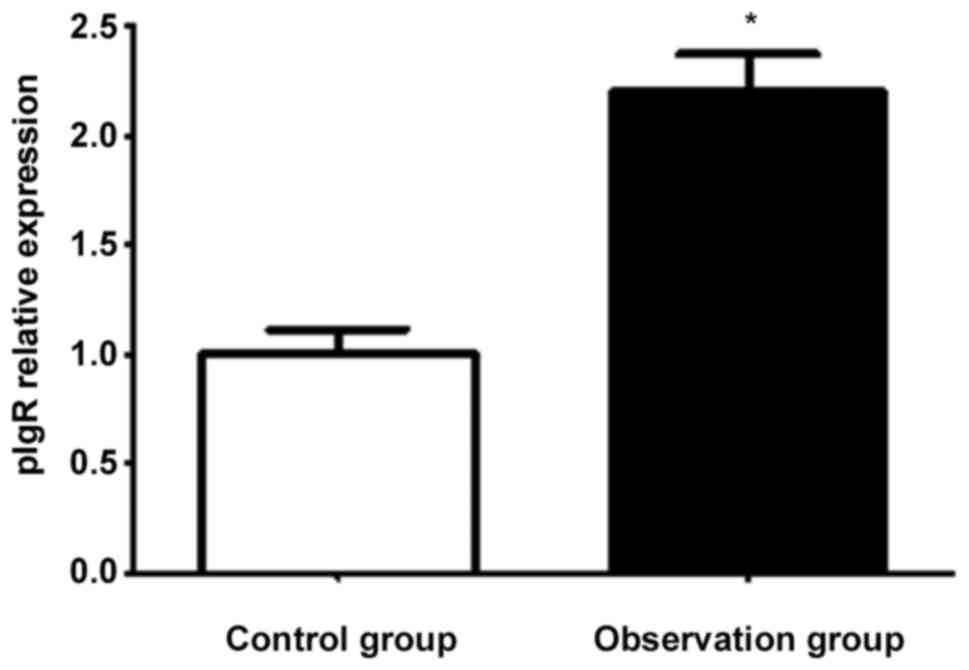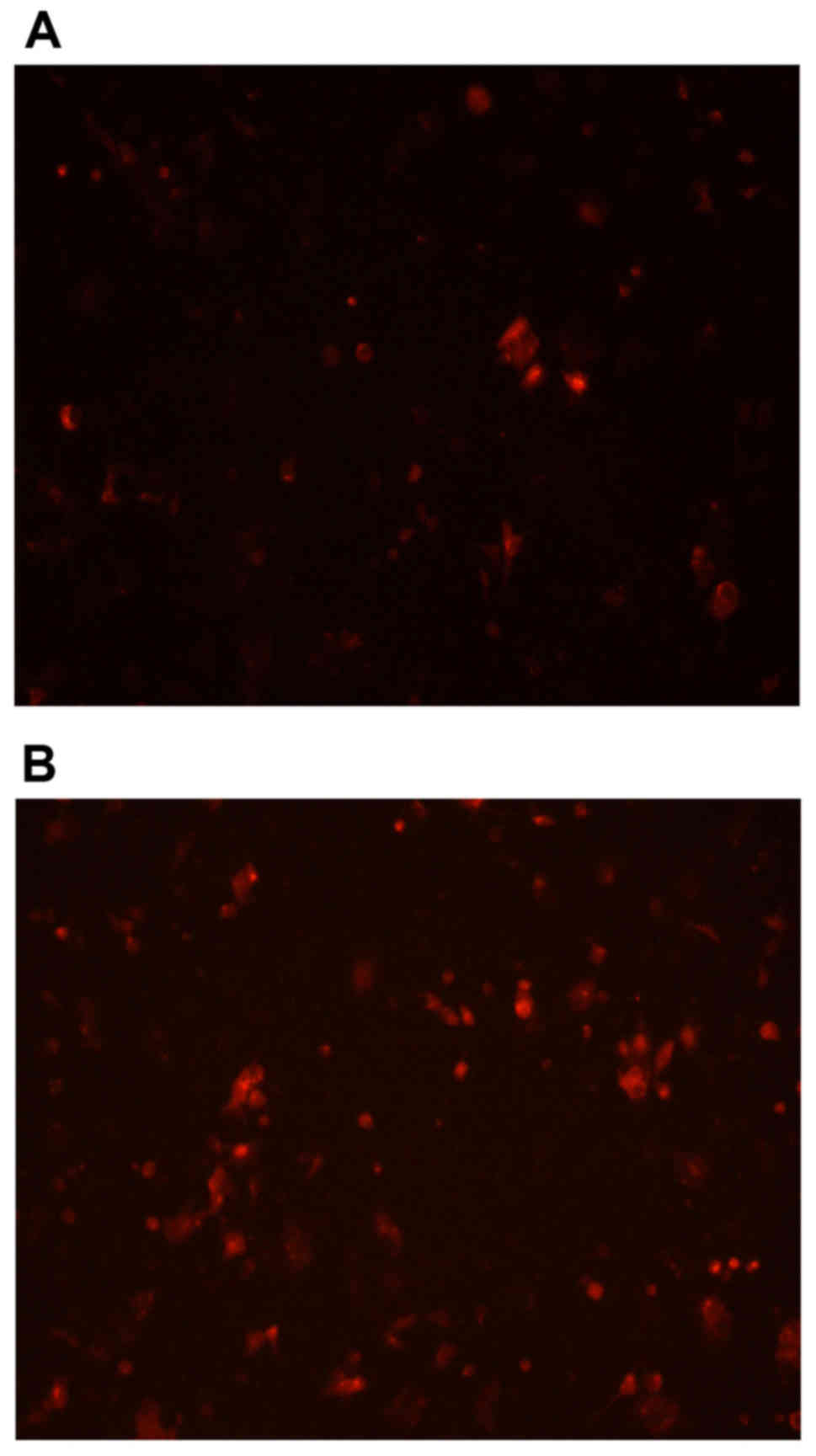|
1
|
Rombout JH, Yang G and Kiron V: Adaptive
immune responses at mucosal surfaces of teleost fish. Fish
Shellfish Immunol. 40:634–643. 2014. View Article : Google Scholar : PubMed/NCBI
|
|
2
|
López MC: Chronic alcohol consumption
regulates the expression of poly immunoglobulin receptor (pIgR) and
secretory IgA in the gut. Toxicol Appl Pharmacol. 333:84–91. 2017.
View Article : Google Scholar : PubMed/NCBI
|
|
3
|
Ward-Caviness CK, Neas LM, Blach C, Haynes
CS, LaRocque-Abramson K, Grass E, Dowdy ZE, Devlin RB, Diaz-Sanchez
D, Cascio WE, et al: A genome-wide trans-ethnic interaction study
links the PIGR-FCAMR locus to coronary atherosclerosis via
interactions between genetic variants and residential exposure to
traffic. PLoS One. 12:e01738802017. View Article : Google Scholar : PubMed/NCBI
|
|
4
|
Li D, Wang FJ, Yu L, Yao WR, Cui YF and
Yang GB: Expression of pIgR in the tracheal mucosa of
SHIV/SIV-infected rhesus macaques. Zool Res. 38:44–48.
2017.PubMed/NCBI
|
|
5
|
Yue X, Ai J, Xu Y, Chen Y, Huang M, Yang
X, Hu B, Zhang H, He C, Yang X, et al: Polymeric immunoglobulin
receptor promotes tumor growth in hepatocellular carcinoma.
Hepatology. 65:1948–1962. 2017. View Article : Google Scholar : PubMed/NCBI
|
|
6
|
Yang S, Liu S, Qu B, Dong Y and Zhang S:
Identification of sea bass pIgR shows its interaction with
vitellogenin inducing antibody-like activities in HEK 293T cells.
Fish Shellfish Immunol. 63:394–404. 2017. View Article : Google Scholar : PubMed/NCBI
|
|
7
|
Armitage CW, O'Meara CP and Beagley KW:
Chlamydial infection enhances expression of the polymeric
immunoglobulin receptor (pIgR) and transcytosis of IgA. Am J Reprod
Immunol. 77:e126112017. View Article : Google Scholar
|
|
8
|
Qi X, Li X and Sun X: Reduced expression
of polymeric immunoglobulin receptor (pIgR) in nasopharyngeal
carcinoma and its correlation with prognosis. Tumour Biol.
37:11099–11104. 2016. View Article : Google Scholar : PubMed/NCBI
|
|
9
|
Zhang F, Liu D, Wang L, Li T, Chang Q, An
L and Yang G: Characterization of IgM-binding protein: A pIgR-like
molecule expressed by intestinal epithelial cells in the common
carp (Cyprinus carpio L.). Vet Immunol Immunopathol. 167:30–35.
2015. View Article : Google Scholar : PubMed/NCBI
|
|
10
|
Yamamoto Y, To M, Hayashi T, Shimizu T,
Kamata Y, Saruta J, Takahashi T and Tsukinoki K: Intake of
indigestible carbohydrates influences IgA response and polymeric Ig
receptor expression in the rat submandibular gland. Br J Nutr.
113:1895–1902. 2015. View Article : Google Scholar : PubMed/NCBI
|
|
11
|
Simpfendorfer KR, Strugnell RA, Brodnicki
TC and Wijburg OL: Increased autoimmune diabetes in pIgR-deficient
NOD mice is due to a ‘Hitchhiking’ interval that refines the
genetic effect of Idd5.4. PLoS One. 10:e01219792015. View Article : Google Scholar : PubMed/NCBI
|
|
12
|
Sankineni S, Cho Y, Hosseinian N and
Kolliputi N: Does pIgR down-regulation in COPD cause reprogramming
of bronchial epithelium? Lung. 193:1–2. 2015. View Article : Google Scholar : PubMed/NCBI
|
|
13
|
Niu H, Wang K and Wang Y: Polymeric
immunoglobulin receptor expression is predictive of poor prognosis
in glioma patients. Int J Clin Exp Med. 7:2185–2190.
2014.PubMed/NCBI
|
|
14
|
Iovino F, Molema G and Bijlsma JJ:
Streptococcus pneumoniae Interacts with pIgR expressed by the brain
microvascular endothelium but does not co-localize with PAF
receptor. PLoS One. 9:e979142014. View Article : Google Scholar : PubMed/NCBI
|
|
15
|
Carrasco-Yepez M, Campos-Rodriguez R,
Lopez-Reyes I, Bonilla-Lemus P, Rodriguez-Cortes AY, de Oca
Contis-Montes A, Jarillo-Luna A, Miliar-Garcia A and
Rojas-Hernandez S: Intranasal coadministration of Cholera toxin
with amoeba lysates modulates the secretion of IgA and IgG
antibodies, production of cytokines and expression of pIgR in the
nasal cavity of mice in the model of Naegleria fowleri
meningoencephalitis. Exp Parasitol. 145 Suppl:S84–S92. 2014.
View Article : Google Scholar : PubMed/NCBI
|
|
16
|
Kortum AN, Rodriguez-Nunez I, Yang J, Shim
J, Runft D, O'Driscoll ML, Haire RN, Cannon JP, Turner PM, Litman
RT, et al: Differential expression and ligand binding indicate
alternative functions for zebrafish polymeric immunoglobulin
receptor (pIgR) and a family of pIgR-like (PIGRL) proteins.
Immunogenetics. 66:267–279. 2014. View Article : Google Scholar : PubMed/NCBI
|
|
17
|
Trevisi P, Gandolfi G, Priori D, Messori
S, Colombo M, Mazzoni M, Lallès JP and Bosi P: Age-related
expression of the polymeric immunoglobulin receptor (pIgR) in the
gastric mucosa of young pigs. PLoS One. 8:e814732013. View Article : Google Scholar : PubMed/NCBI
|
|
18
|
Xu T, Xie W, Ma Y, Zhou S, Zhang L, Chen
J, Cai M, Sun R, Zhang P, Yu S, et al: Leptin/OB-R pathway promotes
IL-4 secretion from B lymphocytes and induces salivary gland
epithelial cell apoptosis in Sjögren's syndrome. Oncotarget.
8:63417–63429. 2017.PubMed/NCBI
|
|
19
|
DeSantis KA, Stabell AR, Spitzer DC,
O'Keefe KJ, Nelson DA and Larsen M: RARα and RARγ reciprocally
control K5+ progenitor cell expansion in developing
salivary glands. Organogenesis. 13:125–140. 2017. View Article : Google Scholar : PubMed/NCBI
|
|
20
|
Qin R, Steel A and Fazel N: Oral mucosa
biology and salivary biomarkers. Clin Dermatol. 35:477–483. 2017.
View Article : Google Scholar : PubMed/NCBI
|















